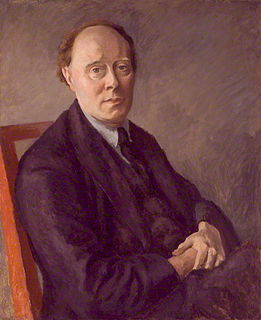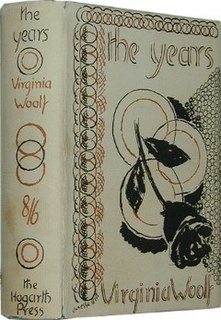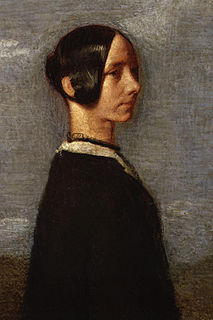Related Research Articles

Adeline Virginia Woolf was an English writer, considered one of the most important modernist 20th-century authors and a pioneer in the use of stream of consciousness as a narrative device.

Pearl Sydenstricker Buck, also known by her Chinese name Sai Zhenzhu, was an American writer and novelist. She is best known for The Good Earth which was the best-selling novel in the United States in 1931 and 1932 and won the Pulitzer Prize in 1932. In 1938, Buck won the Nobel Prize in Literature "for her rich and truly epic descriptions of peasant life in China" and for her "masterpieces", two memoir-biographies of her missionary parents. She was the first American woman to win that prize.

Vanessa Bell was an English painter and interior designer, a member of the Bloomsbury Group and the sister of Virginia Woolf.

Arthur Clive Heward Bell was an English art critic, associated with formalism and the Bloomsbury Group. He developed the art theory known as significant form.

Victoria Mary, Lady Nicolson, CH, usually known as Vita Sackville-West, was an English author and garden designer.

The Hogarth Press is a book publishing imprint of Penguin Random House that was founded as an independent company in 1917 by British authors Leonard Woolf and Virginia Woolf. It was named after their house in Richmond, in which they began hand-printing books as a hobby during the interwar period.

To the Lighthouse is a 1927 novel by Virginia Woolf. The novel centres on the Ramsay family and their visits to the Isle of Skye in Scotland between 1910 and 1920.
Maurice Herbert Dobb was an English economist at Cambridge University and a Fellow of Trinity College, Cambridge. He is remembered as one of the pre-eminent Marxist economists of the 20th century.

Three Guineas is a book-length essay by Virginia Woolf, published in June 1938.
A Common Reader: Books for Readers with Imagination was an American mail-order book catalog, established in 1986 by James Mustich Jr., a bookseller, editor, and writer. It was notable among general-interest book catalogs for its eclecticism, with large sections of each issue given over to obscure literary classics.

The Years is a 1937 novel by Virginia Woolf, the last she published in her lifetime. It traces the history of the Pargiter family from the 1880s to the "present day" of the mid-1930s.

Between the Acts is the final novel by Virginia Woolf. It was published shortly after her death in 1941. Although the manuscript had been completed, Woolf had yet to make final revisions.

Jane Welsh Carlyle was a Scottish writer and the wife of Thomas Carlyle.
This is a bibliography of works by the English novelist and essayist Virginia Woolf.

Daunt Books is a chain of bookshops in London, founded by James Daunt. It traditionally specialised in travel books. In 2010, it began publishing. Its initial Marylebone branch, opened in 1912, claims to be the first custom-built bookshop in the world.
Margaret Elizabeth Jenkins was an English novelist and biographer of Jane Austen, Henry Fielding, Lady Caroline Lamb, Joseph Lister and Elizabeth I. Elizabeth Bowen said Jenkins was "among the most distinguished living English novelists."

Julia Prinsep Stephen was a celebrated Englishwoman, noted for her beauty as a Pre-Raphaelite model and her philanthropy. She was the wife of the biographer Leslie Stephen and mother of Virginia Woolf and Vanessa Bell, members of the Bloomsbury Group.

Freshwater: A comedy is a play written and produced by Virginia Woolf in 1935, and the only play she wrote. Although only performed once in her lifetime, it has been translated into many languages and produced in many countries since. Alfred Lord Tennyson appears as a character in this play.
(Winifred) Aileen Pippett née Side was a British journalist and biographer resident in the United States, author of the first full-length biography of Virginia Woolf, The Moth and the Star, first published in 1953.
References
- ↑ Squier, Susan M. (1985). Virginia Woolf and London: The Sexual Politics of the City. Chapel Hill and London: The University of North Carolina Press. p. 52.
- ↑ Sarker, Sonita (2001). "Locating a Native Englishness in Virginia Woolf's The London Scene". NWSA Journal. 13 (2): 8.
- ↑ Woolf, Virginia (2013). The London Scene. London: Daunt Books. p. 62.
- ↑ Sarker, 10.
- ↑ Woolf, 67.
- 1 2 McVicker, Jeanette (2003). ""Six Essays on London Life": A History of Dispersal Part I". Woolf Studies Annual. 9: 143.
- 1 2 Clarke, Stuart N. (2005). "To the Editor". Woolf Studies Annual. 11: 1.
- ↑ Virginia Woolf (11 August 2013). "Portrait of a Londoner". The Guardian. Retrieved 11 November 2013.
- ↑ Bryony Randall; Jane Goldman (17 December 2012). Virginia Woolf in Context. Cambridge University Press. pp. 237–. ISBN 978-1-107-00361-3.